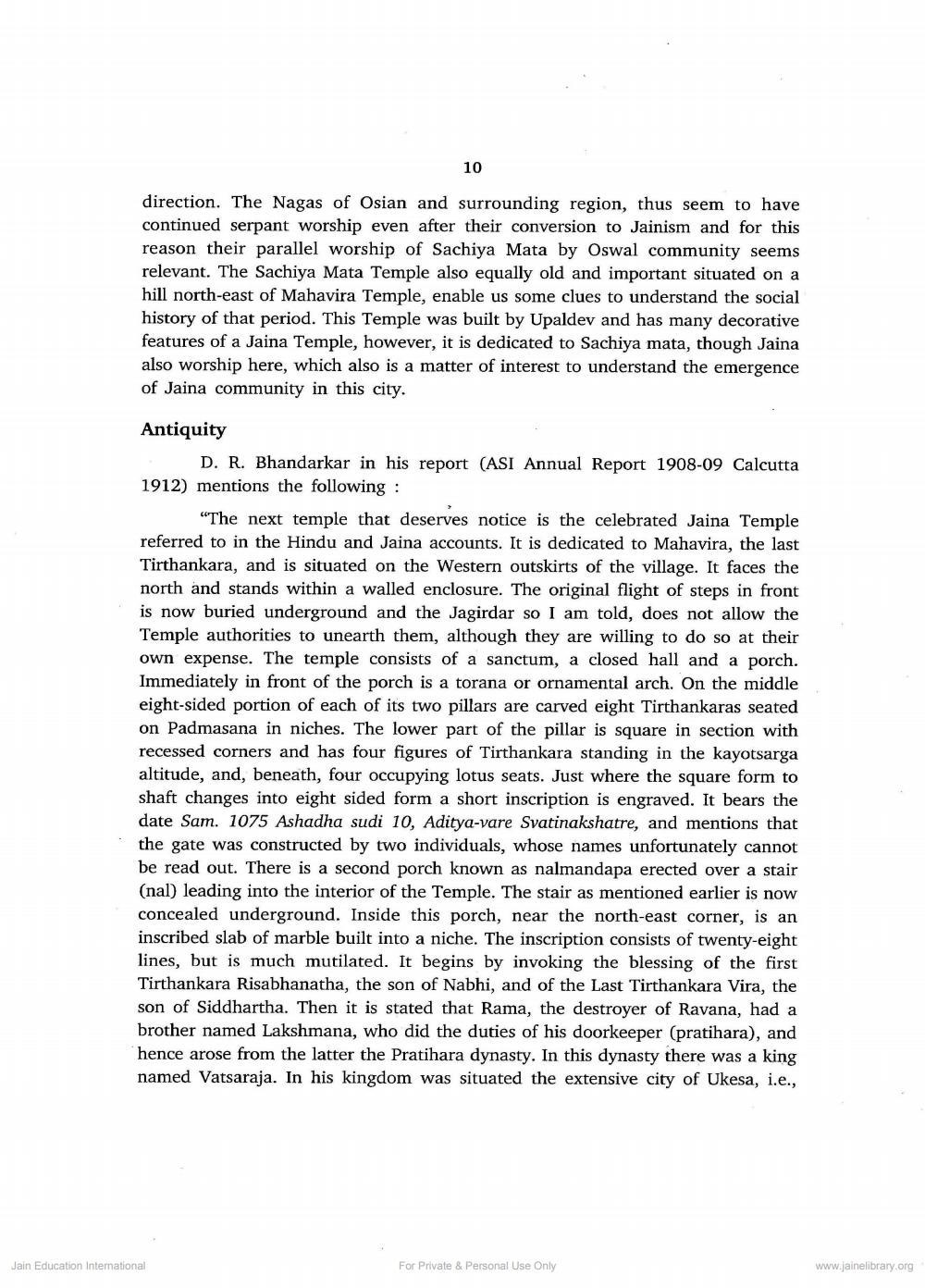________________
10
direction. The Nagas of Osian and surrounding region, thus seem to have continued serpant worship even after their conversion to Jainism and for this reason their parallel worship of Sachiya Mata by Oswal community seems relevant. The Sachiya Mata Temple also equally old and important situated on a hill north-east of Mahavira Temple, enable us some clues to understand the social history of that period. This Temple was built by Upaldev and has many decorative features of a Jaina Temple, however, it is dedicated to Sachiya mata, though Jaina also worship here, which also is a matter of interest to understand the emergence of Jaina community in this city.
Antiquity
D. R. Bhandarkar in his report (ASI Annual Report 1908-09 Calcutta 1912) mentions the following:
"The next temple that deserves notice is the celebrated Jaina Temple referred to in the Hindu and Jaina accounts. It is dedicated to Mahavira, the last Tirthankara, and is situated on the Western outskirts of the village. It faces the north and stands within a walled enclosure. The original flight of steps in front is now buried underground and the Jagirdar so I am told, does not allow the Temple authorities to unearth them, although they are willing to do so at their own expense. The temple consists of a sanctum, a closed hall and a porch. Immediately in front of the porch is a torana or ornamental arch. On the middle eight-sided portion of each of its two pillars are carved eight Tirthankaras seated on Padmasana in niches. The lower part of the pillar is square in section with recessed corners and has four figures of Tirthankara standing in the kayotsarga altitude, and, beneath, four occupying lotus seats. Just where the square form to shaft changes into eight sided form a short inscription is engraved. It bears the date Sam. 1075 Ashadha sudi 10, Aditya-vare Svatinakshatre, and mentions that the gate was constructed by two individuals, whose names unfortunately cannot be read out. There is a second porch known as nalmandapa erected over a stair (nal) leading into the interior of the Temple. The stair as mentioned earlier is now concealed underground. Inside this porch, near the north-east corner, is an inscribed slab of marble built into a niche. The inscription consists of twenty-eight lines, but is much mutilated. It begins by invoking the blessing of the first Tirthankara Risabhanatha, the son of Nabhi, and of the Last Tirthankara Vira, the son of Siddhartha. Then it is stated that Rama, the destroyer of Ravana, had a brother named Lakshmana, who did the duties of his doorkeeper (pratihara), and hence arose from the latter the Pratihara dynasty. In this dynasty there was a king named Vatsaraja. In his kingdom was situated the extensive city of Ukesa, i.e.,
Jain Education International
For Private & Personal Use Only
www.jainelibrary.org




